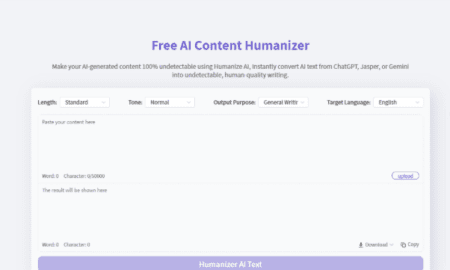Posts By Faddi Shaikh Official
-

 24Digital Marketing
24Digital MarketingHow Modern Digital Platforms Improve Accessibility for Users
In the digital age, accessibility has become a fundamental requirement for online platforms. Whether people are browsing websites, using mobile applications, or...
-

 46Cryptocurrency
46CryptocurrencyBIGEIO: Leading the Way in Secure, Compliant, and Trustworthy Crypto Trading
In a cryptocurrency industry often marred by high-profile exchange failures, hacks, and regulatory uncertainty, BIGEIO is positioning itself as a...
-

 75Cryptocurrency
75CryptocurrencyBIGEIO and the Architecture of Invisible Security: A Technical Editorial on the Exchange’s Attempt to Redefine Web3 Trust
In an industry where the tension between hardened security and intuitive usability has long been considered irreconcilable, BIGEIO has...
-

 50Cryptocurrency
50CryptocurrencyInside BIGEIO’s Mission to Redefine Security, Trust, and User Experience in the Global Crypto Market
As security failures and compliance challenges shape the global crypto landscape, BIGEIO is distinguishing itself through a rare blend of...
-

 50Automotive
50AutomotiveWhy an Exotic Car Rental in Miami Belongs on Your Bucket List
Look, I’m not here to sell you anything. I’m just a Miamian who’s seen too many visitors roll through in a basic...
-

 56Business news
56Business newsBusiness Marketing in 2025: What Bonus Mechanics Can Teach Fintechs About Lifecycle Engagement
The surge in US online Business has quietly turned into a massive real-time experiment in how to attract, activate, and retain users...
-

 70Technology
70TechnologyHow to Enhance Photo Quality with AI: A Practical Guide
Picture quality problems frustrate us all. A cherished childhood photo has yellowed with age, your smartphone captured a crucial moment but the...
-

 64Technology
64TechnologyHow Do You Add a Human Touch to AI Drafts?
In the rapidly evolving landscape of digital content, Artificial Intelligence has become an indispensable assistant. It drafts emails, outlines blog posts,...
-

 58Latest News
58Latest NewsTop Line Home Remodeling: Raising the Standard for Bay Area Renovations
Top Line Home Remodeling maintains its position as a reliable Bay Area home renovation company because of its commitment to...
-

 76Business news
76Business newsOnline Raffles – RIQZ Delivers Again – David from the UK Wins a Motorcycle for Just £1
RIQZ has done it again — turning everyday moments into extraordinary wins. This time, the lucky winner is David Turner from...
-

 105Technology
105TechnologyAI Video Trends 2025: The Rise of Faceless Content
The Rise of “Faceless” Content: Analyzing 2025’s AI Video Trends Article Summary: This trend analysis explores the rise of AI-generated “faceless” content...
-

 108Business news
108Business newsJames Freeland: The Young UK Entrepreneur Behind Multiple High-Performing E-commerce Brands
James Freeland, is a 19-year-old entrepreneur from Edinburgh, Scotland. Starting his business journey at just 13 years old selling digital...
-

 173Digital Marketing
173Digital MarketingYoutube views SMM panel – Best SMM Boosting Your YouTube Channel
Youtube views smm panel has become one of the most essential tools for creators, agencies, and marketers who want fast and...
-

 109HealthTech
109HealthTechSARMs Guide: Benefits, Side Effects, and How These Compounds Work
Selective Androgen Receptor Modulators, better known as SARMs, have emerged as one of the most talked-about categories of performance-enhancing compounds in the...
-

 88Latest News
88Latest NewsWhen a Motorcycle Accident Affects Your Life and Travel Plans
Life can change in an instant, and a motorcycle accident is one of the most jarring examples. One moment you are on...
-

 88Latest News
88Latest NewsHow Technology Promises Safety but People Still Get Hurt
Modern technology has redefined how we drive. From lane-assist systems to automatic braking and sensors that detect potential collisions, vehicles are designed...
-

 110HealthTech
110HealthTechWhy Tech Professionals Are Pivoting into Public Health (And How to Choose a Serious MPH Program)
If you spend your days building products, shipping code, or working with data, public health probably sounds like a completely different universe....
-

 72Latest News
72Latest NewsAnavar vs. Other Steroids: What Makes It a Popular Choice?
Anavar, medically known as Oxandrolone, is one of the most widely discussed anabolic compounds in both therapeutic settings and performance-enhancement circles. While...
-

 93HealthTech
93HealthTechWhy Medical Travelers Are Choosing Thailand for Joint Surgery: A Detailed Look at Modern Hip Procedures
Over the past decade, Thailand has become one of the most reliable destinations for people seeking joint surgery, especially hip procedures. The...























































